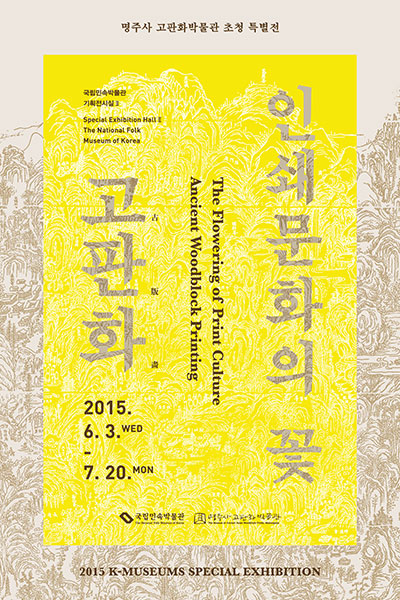
Introduction
The National Folk Museum of Korea in Seoul opens a special exhibition, entitled ‘The Woodblocks, Blossom of Print Culture.’ The exhibition shows old printing blocks from the collection of Woodblock Prints Museum at Myoungjoo Temple (Gangwon-do), which has established a great reputation for its outstanding collection of old engravings as well as in-depth research of them.
Engraving is the craft of incising a picture onto a plate made of wood or metal, by cutting grooves into it. After incising process, a craftsman prints the picture on the paper using Chinese ink or water-colours. In Korea, woodblock prints were traditionally used for printing books. Those books included not only texts but also pictures for effective communication with readers, especially illiterate people. Furthermore, some craftsmen engraved beautiful images onto woodblocks with their own religious faiths. This craft was also utilised for printing designs or patterns of book covers or even cloths.
Enlightening the World: Knowledge
Carrying the Hope: Prayer
Developing the Taste: Ornamentation
We hope the audience enjoy the beauty of old engravings exhibited in the museum, which will be led to develop a new cultural content.
Part I. Enlightening the World: Knowledge
From the Goryeo to the Chosun Dynasties, the woodblock print was one of the most practical measures for print culture that imparted religious teaching or historical knowledge to public. The books contained not only texts but also interesting illustrations of novels and information, ranging from faiths and ethics to geography. For those illustrations, engraving was the essential craft.
Part II. Carrying the Hope: Prayer
Korean traditional woodblock prints expressed people’s pray to God for mercy. In Buddhism, craftsmen carved pictures of teachings of Buddha on woodblocks as a Buddhist service or practice of good deeds, like religious scriptures and paintings. On the other hand, the craft was also useful to print good-luck charms in a Shamanistic way. In this case, the image of magpies and tigers were often used.
Part III. Developing the Taste: Ornamentation
The craft of print was useful for expressing artistic tastes in daily life. In the late Chosun, following the social-economic development, culture became diversified and the artistic activities were invigorated. People also wanted to decorate their living spaces. In order to meet the people’s tastes, print pictures describing flowers, birds, and landscapes were increasingly produced. These pictures of flowers, birds, and auspicious characters were also used for designs and patterns for book covers and clothes.



